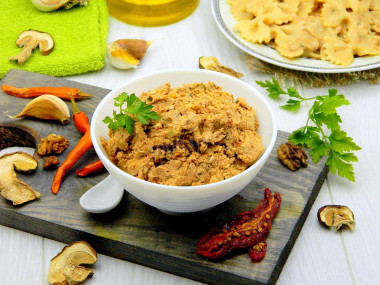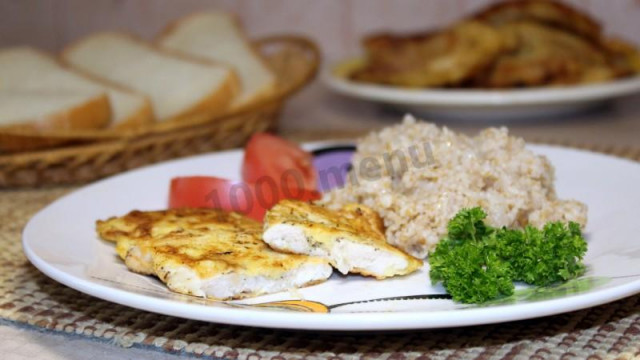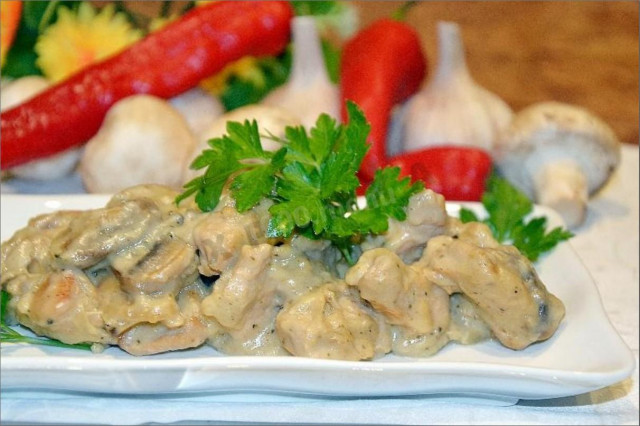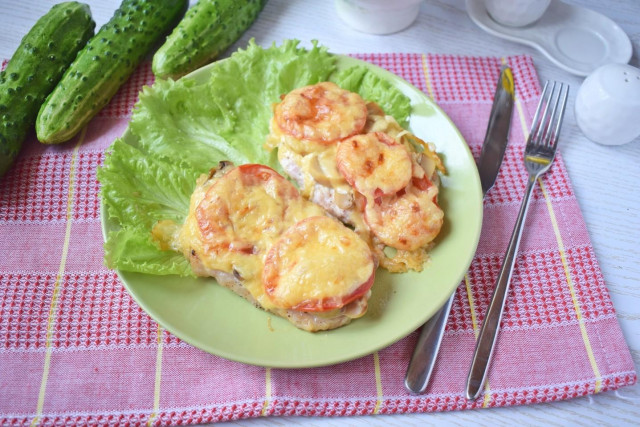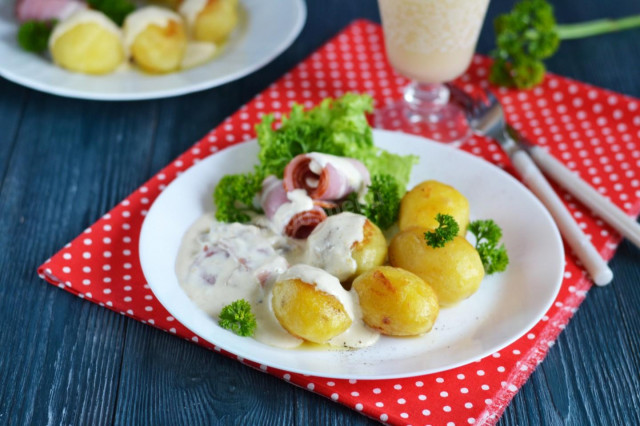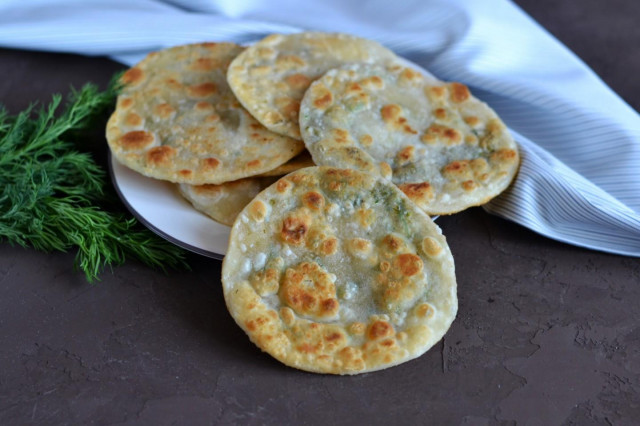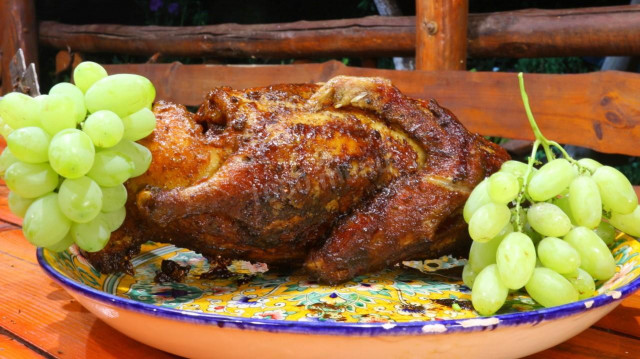Composition / ingredients
Step-by-step cooking
Step 1:
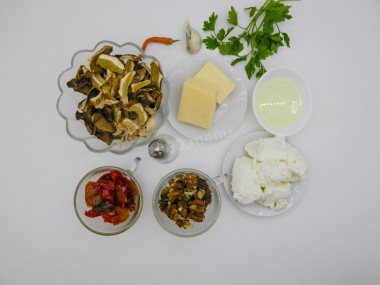
How to make pesto from dried porcini mushrooms? Prepare all ingredients. Instead of parsley, you can take any greens - green basil, arugula, spinach, cilantro. Walnuts can be replaced with cedar nuts, cashews or almonds. But basil and pine nuts are closer to the classic Italian cuisine.
Step 2:

Pour the mushrooms and dried tomatoes separately with room temperature water and leave for about 2 hours.
Step 3:
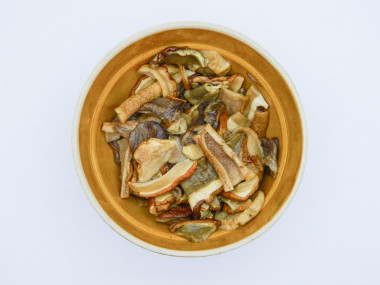
During the specified time, the mushrooms should become soft and slightly increase in volume. Drain and rinse thoroughly under running water.
Step 4:
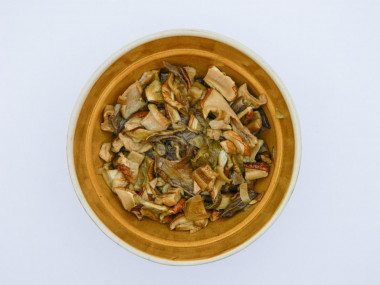
Then cut the mushrooms into small cubes.
Step 5:
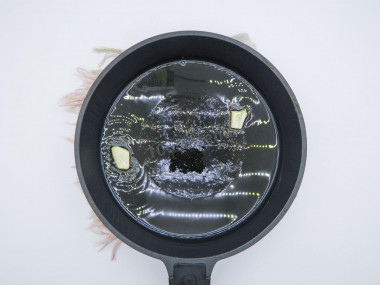
Peel and wash the garlic, cut along the clove into 2 parts. In a preheated frying pan, heat the vegetable oil. Fry the garlic over medium heat for 2 minutes, stirring.
Step 6:
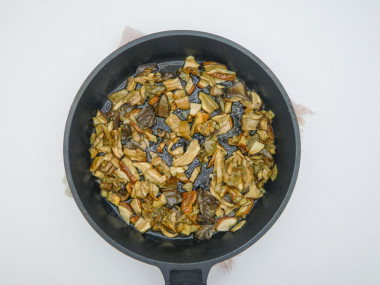
Remove the garlic, it will no longer be useful to you. Transfer the chopped mushrooms to a frying pan and fry them over medium heat for 3 minutes. When all the excess water is gone from the mushrooms, remove the pan from the heat and cool. Fry the mushrooms carefully, do not over-dry, otherwise the taste of the sauce will be spoiled.
Step 7:
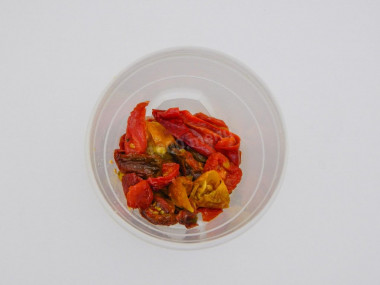
Drain the tomatoes and put them in a blender bowl or in a deep bowl, in which it will be convenient to chop the ingredients. Excess oil and spices will be washed off with water.
Step 8:
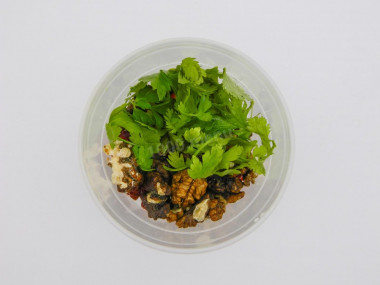
Add nuts and parsley to tomatoes. Before that, remove the flaccid leaves and hard stems from the parsley, rinse, dry and disassemble into leaves.
Step 9:
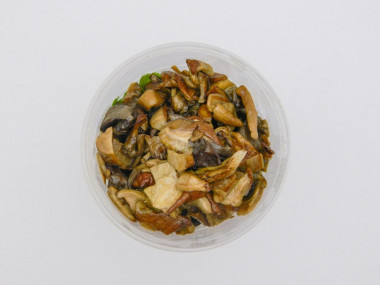
Lower the cooled mushrooms along with the oil into the blender bowl, too.
Step 10:
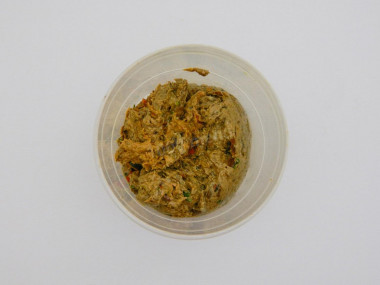
Grind everything to a homogeneous paste-like state.
Step 11:
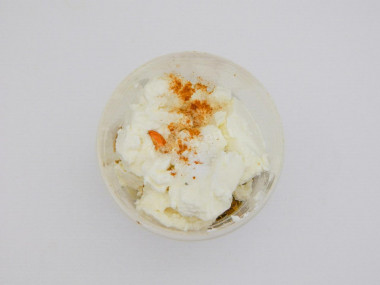
Then add the ricotta, salt and pepper to taste.
Step 12:
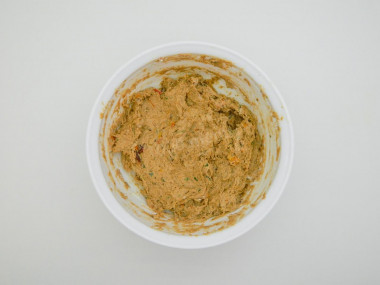
Mix until smooth.
Step 13:
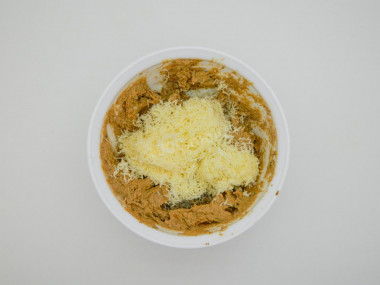
Grate the hard cheese on the smallest grater and add to the sauce.
Step 14:
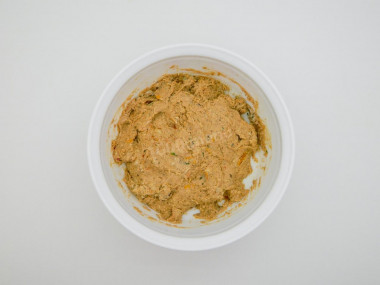
Mix everything thoroughly. If the pesto is too thick, add a little olive oil and mix thoroughly.
If you plan to add sauce to pasta - make it more liquid, if used as a spread on bread - thicker.
Use oil with a high smoking temperature for frying! Any oils are useful only until a certain temperature is reached - the point of smoking, at which the oil begins to burn and toxic substances, including carcinogens, are formed in it.
Unrefined oils, with rare exceptions, have a low smoking point. There are a lot of unfiltered organic particles in them, which quickly begin to burn.
Refined oils are more resistant to heating, and their smoking point is higher. If you are going to cook food in the oven, on a frying pan or grill, make sure that you use oil with a high smoking point. The most common of the oils with a high smoking point: refined varieties of sunflower, olive and grape.
Caloric content of the products possible in the composition of the dish
- Walnuts - 650 kcal/100g
- Black Walnut English Walnut - 628 kcal/100g
- Black Persian Walnut - 651 kcal/100g
- Walnut oil - 925 kcal/100g
- Dutch cheese - 352 kcal/100g
- Swiss cheese - 335 kcal/100g
- Russian cheese - 366 kcal/100g
- Kostroma cheese - 345 kcal/100g
- Yaroslavsky cheese - 361 kcal/100g
- Altai cheese 50% fat content - 356 kcal/100g
- Soviet cheese - 400 kcal/100g
- Cheese "steppe" - 362 kcal/100g
- Uglichsky cheese - 347 kcal/100g
- Poshekhonsky cheese - 350 kcal/100g
- Lambert cheese - 377 kcal/100g
- Appnzeller cheese with 50% fat content - 400 kcal/100g
- Chester cheese with 50% fat content - 363 kcal/100g
- Edamer cheese with 40% fat content - 340 kcal/100g
- Cheese with mushrooms of 50% fat content - 395 kcal/100g
- Emmental cheese with 45% fat content - 420 kcal/100g
- Gouda cheese with 45% fat content - 356 kcal/100g
- Aiadeus cheese - 364 kcal/100g
- Dom blanc cheese (semi-hard) - 360 kcal/100g
- Lo spalmino cheese - 61 kcal/100g
- Cheese "etorki" (sheep, hard) - 401 kcal/100g
- White cheese - 100 kcal/100g
- Fat yellow cheese - 260 kcal/100g
- Altai cheese - 355 kcal/100g
- Kaunas cheese - 355 kcal/100g
- Latvian cheese - 316 kcal/100g
- Limburger cheese - 327 kcal/100g
- Lithuanian cheese - 250 kcal/100g
- Lake cheese - 350 kcal/100g
- Gruyere cheese - 396 kcal/100g
- Garlic - 143 kcal/100g
- Fresh porcini mushrooms - 34 kcal/100g
- Fried white - 162 kcal/100g
- White pickled - 24 kcal/100g
- Parsley greens - 45 kcal/100g
- Salt - 0 kcal/100g
- Olive oil - 913 kcal/100g
- Pepper - 26 kcal/100g
- Ricotta - 174 kcal/100g
- Dried tomatoes - 213 kcal/100g


